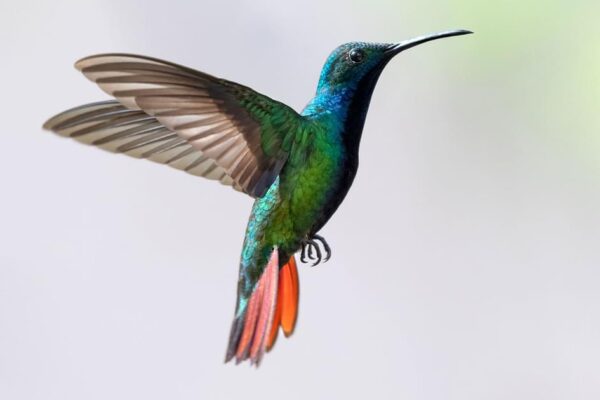Mammals and birds, integral components of contemporary ecosystems, boast an evolutionary history spanning hundreds of millions of years. Unraveling the emergence of lineages leading to the diverse mammalian and avian species we encounter today requires a journey through the annals of evolutionary time.
In the quest to comprehend the development of modern mammals and birds, clarity about the term “modern” proves crucial. In this context, “modern” denotes the subclasses of mammals known as placentals and birds known as neognaths, encompassing the majority of today’s species.
Placentals and Neognaths: The Modern Pioneers
Placentals, exemplified by humans, dogs, cats, and elephants, are distinguished by live births and the presence of a placenta nurturing developing fetuses. Neognath birds, a subclass boasting a diverse array including sparrows, eagles, and penguins, feature specialized jaws enabling varied beak shapes and functions.
Exclusion of Primitive Forerunners and Extinct Branches
The narrative of modern mammals and birds deliberately omits primitive forerunners and extinct branches. Monotremes like platypuses and echidnas, categorized as more primitive mammals, fall outside the modern mammal classification. Similarly, extinct bird branches like the non-neognath group “archaeornithes” reside beyond the modern bird lineage.
Anatomical Traits as Identifiers
Identification of modern mammals and birds rests on key anatomical traits. Mammals, marked by mammary glands producing milk and the presence of hair or fur, stand distinct in the animal kingdom. Birds, featuring feathers, beaks, and the ability to lay hard-shelled eggs, carve out their unique niche in the avian realm.
The Rise of Mammals in the Mesozoic Era
The Mesozoic Era, dubbed the “Age of Reptiles,” unfolds as a pivotal epoch in Earth’s evolutionary tapestry. Amidst dinosaur dominance, mammal-like reptiles, specifically cynodont therapsids, laid the groundwork for modern mammals.
Cynodont Therapsids: The Precursors
Emerging around 260 million years ago in the late Permian period, cynodont therapsids exhibited traits bridging reptiles and mammals. Specialized teeth, an efficient respiratory system, and a higher metabolic rate conferred evolutionary advantages, allowing them to thrive and anticipate the emergence of modern mammals.
Multituberculates and the Triassic/Jurassic Collaboration
The Triassic and Jurassic periods witnessed the continued evolution of mammals alongside dinosaurs. Multituberculates, a notable mammal group, showcased specialized teeth, excelling in processing tough plant material. Their success endured until the early Cenozoic era.
Mating Dance: Late Cretaceous Diversification
Around 90 million years ago in the late Cretaceous period, mammals experienced significant diversification. Primitive placentals and marsupials joined the mammalian narrative, each following distinct reproductive strategies. Placentals, with a complex reproductive system, coexisted with marsupials, whose undeveloped young completed development in specialized pouches.
Neornithine Birds Take Flight
The evolutionary trajectory of neornithine birds, encompassing all modern species, originated from maniraptoran coelurosaur dinosaurs during the Cretaceous Period.
Theropods: The Avian Ancestry
Fossil evidence suggests that birds evolved from theropods, a subgroup of maniraptoran coelurosaur dinosaurs, featuring famous members like Tyrannosaurus rex and Velociraptor. Smaller theropods, with adaptations for climbing trees and gliding, eventually evolved into modern birds.
Archaeopteryx: The Fossil Symphony
A pivotal piece of evidence is the fossil of Archaeopteryx, an ancient bird-dinosaur hybrid from the Late Jurassic period. Exhibiting a blend of bird-like and ancestral dinosaur traits, Archaeopteryx showcased feathers, wings, and a wishbone alongside teeth, a long tail, and wing claws.
Diversification Post Dinosaur Extinction
The extinction event marking the end of the Cretaceous period, approximately 66 million years ago, paved the way for neornithine birds to diversify and dominate the avian landscape.
Post-Extinction Renaissance
The abrupt disappearance of non-avian dinosaurs created ecological vacuums, offering opportunities for mammals and birds to flourish. Mammals diversified into large herbivores, predators, and marine species, while birds, with their flight capabilities, explored diverse niches.
Rapid Speciation: The Dawn of Modern Orders
Post-extinction, mammals and birds underwent rapid speciation, leading to the formation of modern orders and families. Adaptive radiation fueled the emergence of diverse mammalian groups (e.g., primates, carnivores) and bird lineages (e.g., passerines, raptors).
Flourishing in the Post-Extinction Era
Mammals and birds, having seized the ecological opportunities presented by the K-Pg extinction, continue to thrive in the modern world.
The Success of Mammals and Birds Today: A Symphony of Diversity
Today, the triumph of mammals and birds unfolds across a rich canvas of diversity. With over 20,000 bird species and 6,000 mammal species, they stand as the epitome of adaptability and ecological success.
Global Adaptability: From Hummingbirds to Whales
Birds, representing over 20,000 species, have evolved to occupy an extensive array of habitats and fulfill diverse ecological roles. From nectar-feeding hummingbirds to majestic eagles, their adaptations include specialized beak shapes tailored to distinct feeding habits.
Mammals, numbering around 6,000 species, have similarly adapted to varied diets and lifestyles. From the tiniest shrews to the largest whales, their diversity showcases adaptations for herbivory, carnivory, and omnivory.
Ecological Contributions: Guardians of Balance
Beyond sheer numbers, birds and mammals significantly contribute to global vertebrate biomass, playing indispensable roles in ecosystems. Birds, essential in pollination, seed dispersal, and insect control, synergize with mammals that aid in seed dispersal, soil aeration, and nutrient cycling.
An Ongoing Symphony of Evolution
In conclusion, the saga of modern mammals and birds unfolds as a captivating symphony, echoing through millions of years of evolutionary history. Their success, marked by resilience, adaptability, and ecological contributions, continues to shape the intricate narrative of Earth’s biodiversity. As we marvel at the diverse tapestry of life around us, let us appreciate the intricate melodies contributed by these remarkable creatures.



![Why Does The Porridge Bird Lay Its Eggs In Other Birds’ Nests? [Explained]](https://birdsology.com/wp-content/uploads/2024/01/15605.webp-600x400.webp)
![22 Species of Red Birds [Images + IDs]](https://birdsology.com/wp-content/uploads/2023/03/49398054206_fb3c667a31_b-600x400.jpg)

2 thoughts on “When Did Modern Mammals And Birds Develop?”